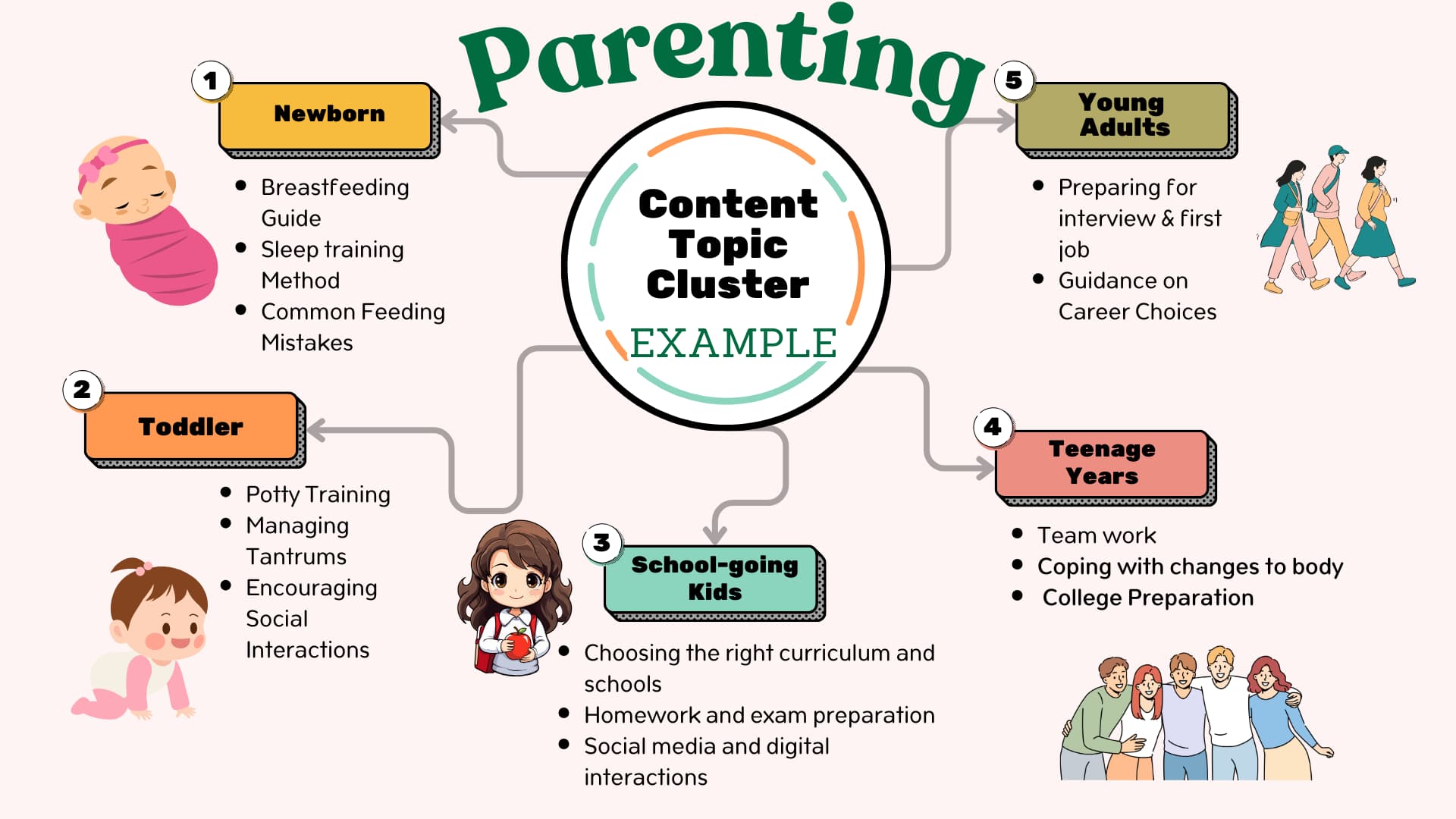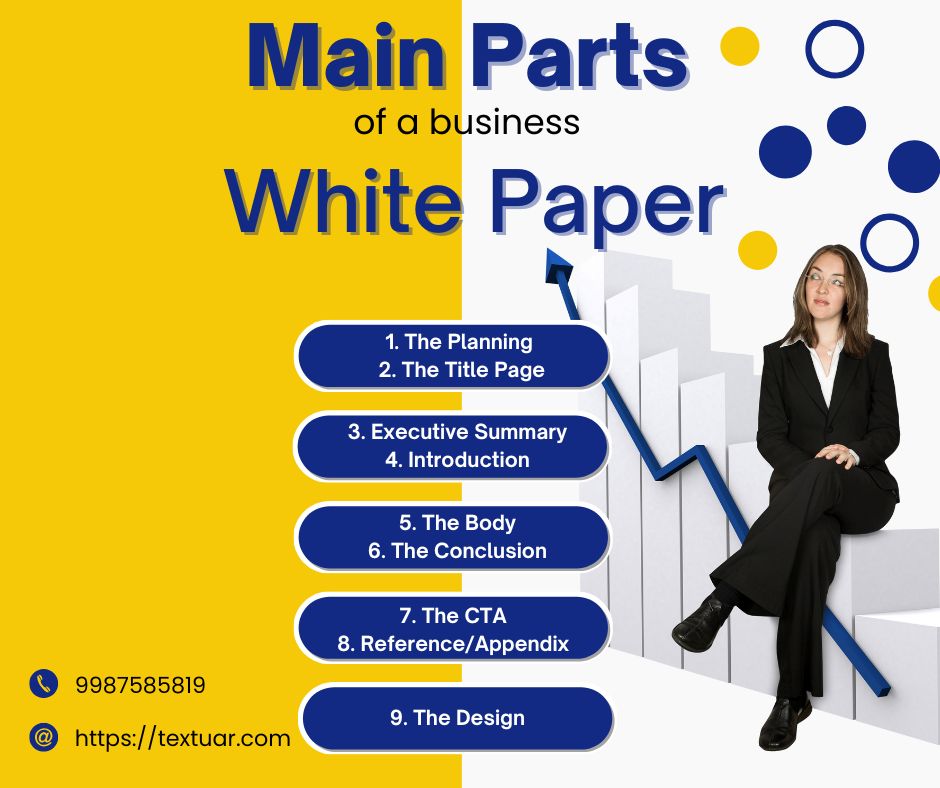Can you think about the last time you performed a search? You probably typed in a question/sentence. Online customer behavior has undergone a massive shift in recent years. The days of simply typing in a few keywords and getting results are gone. Now, search engines are increasingly becoming sophisticated. They demand quality content writing that covers a topic in detail.
Do you wish to stay competitive? Then, it is no longer enough to target specific keywords. Instead, you should focus on dominating all the topics. You should create good quality content that addresses the various aspects of a certain subject. This can be achieved through content clusters.
Need help understanding topic clusters? Then you have landed at the right place.
This post is here to make you understand everything about content clusters. Read on to find out more.
What are Content Topic Clusters?
This is a strategic approach. It includes organizing related content around a main subject or a central theme. Experts call this as the pillar topic. With content clusters, you can create an extensive link of content assets.
Such clusters are based on creating a pillar page that broadly covers a topic. It links it to multiple related but more specific content pieces. They are referred to as cluster pages, which are also interlinked.
By interlinking these smaller pieces with the pillar, you create cohesion and interlinking. This will allow search engines to get a much better sense of what your website content is about. It will also allow users to traverse your website more efficiently. They can find what they are looking for.
What is an Example of Content Topic Clusters?
Let us assume that you excel at parenting blogs. You can have a super structure, “Parenting Tip and Advice”. This hub will be followed by various groups of related topics like –
- Newborn
- Toddlers
- School-going kids
- Teenagers
- Young adults
Each of these groups will have their own subset of topics. For instance, ‘Newborn’ section will have further topics like
- Guide to breastfeeding
- Sleep training methods
- Common feeding mistakes to avoid

How do Content Topic Clusters Work?
Content clusters work by strategically organizing a website’s content into a logical, interconnected structure. At the center is the pillar page. This broadly covers the main topic. Surrounding this pillar is the cluster pages.
As we saw above, ‘Parenting Tips and Advice’ was the pillar page. It further branched to subtopics like ‘Tips for Newborns’, or ‘Tips for School-going children’. These cluster pages link back to the pillar page and also link to one another. Creating a web of internal links.
What are the Benefits of Content Topic Clusters in Content Writing?
– Content Topic Clusters are Great for Keyword Research
The process of keyword research will become easy because of content clusters. You can search for very niche topics. You can easily avoid general terms and go for specific search terms.
This can drive traffic to those pages from search. It also takes content creation to a whole new level for your marketing team.
– Improved SEO Performance
Content clusters enhance SEO with a network of interlinked, topically related pages. This structure helps search engines understand the breadth and depth of a site’s expertise on a given subject. Your site can gather relevant content and internal links around pillar topics.
This way, it can boost authority and relevance for key search terms. This is likely to improve rankings for a wider range of related keywords.
– Enhanced User Experience
Content clusters sort out information in a logical, user-friendly manner. Visitors can easily navigate from broad topics to specific subtopics. They will find elaborate information on subjects that interest them.
This improved structure reduces bounce rates and increases time on site. This action happens because users are more likely to explore related content. The interconnected nature of clusters also helps users discover relevant information they might not have initially searched for.
– Efficient Content Creation
When you map out content clusters, you unlock a lot of insights. You can identify gaps in existing content and prioritize new topics to cover. This strategic approach prevents redundant content creation. Also, it ensures a more detailed coverage of key subjects.
Content clusters also provide a framework for long-term content planning. This way, your team teams can create cohesive, interconnected pieces that build upon each other over time.
How can Content Topic Clusters Help with SEO?
The world of SEO is filled with a variety of solutions and strategies. Thus, it is very easy to feel overwhelmed and skeptical. To some, it may even seem a drastic move to introduce topic clusters since it means redoing the entire structure and content of a website. The potential reward, however, is big.
Search engines are actively seeking websites that apply the topic cluster model in their work. You are just aligning your site to the trends and best practices by doing this. This can be a huge plus.

How can You Create Content Topic Clusters?
There are three things involved in it-
– A very important pillar piece
– Clustered content that links and supports the pillar piece
– Relevant and active hyperlinks on both the pillar page and subtopic posts. This is to keep their connection alive.
This is obviously just an overview. Your site reorganization will need more work. It is more than just slapping content that complements each other. Here is a rundown of the process for you-
– Know your current content
You should figure out what content you have already have and how it is related. You might already have interlinked and keyword-rich posts on your site, and a core topic to work with. Some tweaking may be all that is required.
– Look for recurring themes and patterns
If your site already ranks on the first SERP for certain keywords, you want to favor those. You should give the people more of what they want. This can help with your rank. Otherwise, skim your content for common keywords, recurring themes, and long-tail keywords that show up more often.
– Choose a set of subtopics for the content topic clusters
Your subtopics make for smaller pages with more in-depth info on a specific topic derived from the pillar page. Keep in mind it should be relevant and helpful to the reader.
Consider the intent of the user utilizing the search engine as you conduct your keyword research on search volume and implement SEO. Think about what your ideal customer wants from you as a company and deliver that information. This should be without extra fluff or keyword stuffing.
– Reorganize topics as per the clusters
Once you are done deciding which topic go together in a sub category, it is time to organize it. For many site owners it means writing a pillar post to reorient the smaller posts around it.
– Seek more opportunities
You should not stop just at reorganizing your existing topic and content. It is a good idea to visit Google to expand your central theme or topic. You can type in your pillar page’s focus and your main keywords. Then see what Google has to say.
You can look at the related section for more fodder for your subtopic outlining. You can then build links and valuable content. This will keep your site updated.
– Use the same anchor text
A clever trick to boost your search rankings is to use consistent anchor text. Suppose your website is all about water bottles and you have a main article on choosing the perfect one. Then try linking to it from other pages using the same phrase. For example, you could use ‘find the best bottle for you’ in all your subtopic articles.
To sign off
We understand that navigating content clusters can be complicated. But it is in the interest of your readers. They are your means of thriving with well-crafted content writing. This is why it is worth investing in content clusters. It can be a great way to serve your audience. This mindset will help shape your SEO techniques and build your topic clusters.
You can reach out to Textuar to help with selecting trending topics as per your topic cluster.










